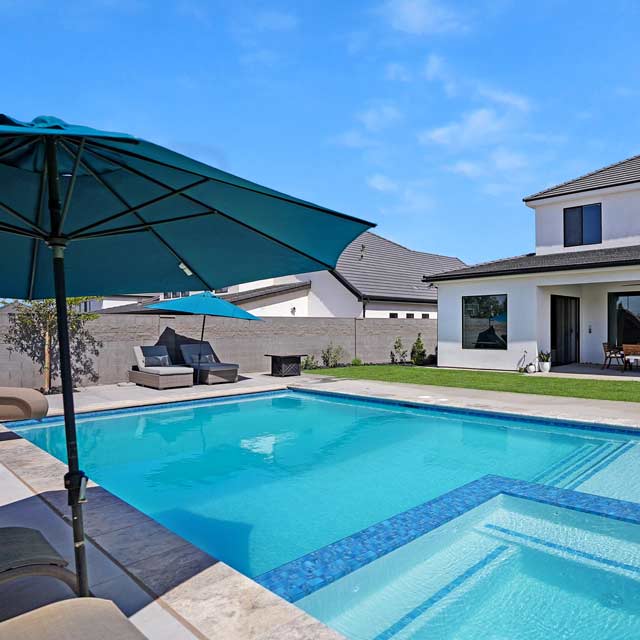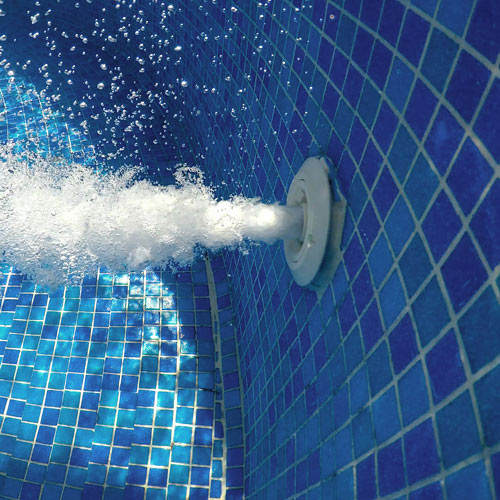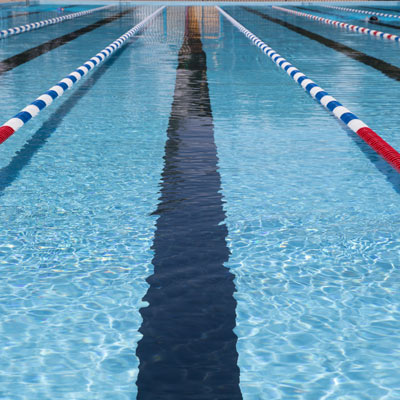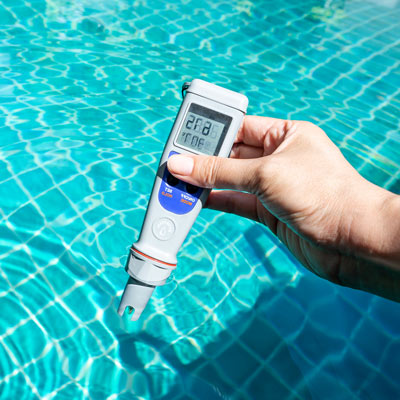What size pool filter should I buy?

What size pool filter should I buy? There are a lot of considerations for this, it’s not really the linear question that you’re hoping it will be.
Calculating flow rate
And the first thing that you need to consider is the flow rate of your swimming pool. And you’re like flow rate, what’s that all about? Well, you need to filter the volume of your pool three times every 24 hours, and that’s a by-the-book standard that will achieve 95% of all of the water in your pool being filtered at least one time, and so that’s kind of your starting point. If you had a 10,000-gallon pool then you need to filter 30,000 gallons every 24 hours. And so this is how you start the process of determining what size of filter you’re going to get, because we’re going to be able to determine flow rate.
But again, this is where it starts to get complicated because now we know you need 30,000 gallons right, so what size filter do I need? So you do 30,000 gallons a day, but do you run your filter 24 hours a day or are you just turning your pump on for four hours, eight hours, 12 hours a day? What’s your schedule because that is the number that we need to apply here.
Next, we need to determine how many gallons per minute your system needs to achieve in order to achieve your turnovers. And again, this all kind of works backwards for the average pool owner because you’re missing a critically important piece of instrumentation, you don’t have a flow meter. In the commercial sector all pools have flow meters, we have to know how much water is moving through the system, but in a residential pool it’s always been kind of viewed as an optional extra and really nobody has one, one out of a hundred, if that, has a flow meter. And so you don’t know how much water moves through your system. And so already in this filter equation, trying to figure out what size filter you should buy, we are now relegated to guessing. We have to guess about what your system may be doing because we don’t know.
Flow rates are very deceiving. You might hear inch and a half-pipe, inch, and half PVC, we deal with that for pools all the time. You can move 35 gallons per minute through an inch and a half PVC. That is correct, you can move 35 gallons per minute but that’s actually not a hard maximum, you can move an awful lot more than that. 35 gallons per minute, which is about six feet per second of flow represents the maximum efficient flow through an inch and a half pipe. You can move 80 or 90 gallons per more with just a modestly sized pool pump through an inch and a half pipe. It’s just not moving very efficiently through the lines and so it’s very difficult for me to tell you site unseen, not seeing your pool system, oh well you’re going to move about this much water. I don’t know how much you’re going to move, you don’t know how much you’re going to move because you don’t have a flow meter.
And so how do we go about calculating the size for your filter? Well, what most people do is they just go ahead and replace, whatever was there now they just get the exact same one and put it there. I do not have confidence that the last time that the filter was replaced that anybody sized it properly for your system. And so it really warrants consideration when you think about this.
Picking the Filter
When I’m shopping, the first thing that I’m looking for, the first parameter I’m considering on the new filter is the maximum design flow rate. This is a very, very important number because this is the maximum flow that you can and should send through your plumbing system before damage might be experienced to this filter that you’re replacing.
And this is the big thing, if you make a mistake here with your filter sizing it will be here. It will be the point at which you bought a sand filter, which are notorious for having very low numbers for maximum design flow rate, 50 or 70 gallons per minute on even a large sand filter, 70 gallons per minute is kind of your best-case scenario. And so if you were to go and pair that with one of these new fancy variable speed pump sets in the two to three horsepower range you’re going to blow the doors off that sand filter regardless of what size plumbing you have, whether inch and a half or two-inch, you are going to send way more water than that filter is going to be able to handle. And that’s the mistake that people are going to make when they’re trying to figure out, well what size should I get?
You should get something that has a very high maximum design flow rate. I like to see a hundred to 120 or more gallons per minute as the maximum design flow rate for the filters that I replace, but you’re not going to get that out of a sand filter, or at least any sand filter that I know about. You really would be looking at either DE filters or cartridge filters, which don’t have a multi-port valve on them, which is a huge flow restriction. And so that’s something that you’re going to be looking at right away. If you’re considering DE or cartridge right out of the gate here you’re at an advantage because you are choosing from filters that all have a pretty high maximum design flow rate compared to sand filters.
If you’re trying to size your pool filter and you’re looking at sand I’m a little concerned because again, they have a very low maximum design flow rate, and most pool pumps these days are going to easily exceed that number. When you were shopping for a filter and you were thinking how many pounds of sand do I need because that’s typically how filters are rated, they are 200-pound filters or 300-pound filters. That’s not good enough for you, you could have a three or four, or even 600-pound sand filter, but if it only has a maximum design flow rate of 70 or 75 gallons per minute, again all of these larger variable speed pool pumps, even some of the smaller ones if you had an otherwise well-designed system like with two-inch suction in return lines, you’re going to be getting well in excess of a hundred gallons per minute, and your sand filters not going to be able to handle that.
So look towards cartridge and DE filters when sizing and look towards getting a filter that has the highest maximum design flow rate that you’re able to afford to buy. And I think that that’s going to be… It’s going to head you down the right path.
The truth is that both of those cartridge filters, small and large, have a very high maximum design flow rate, probably a hundred, 120 or more gallons per minute, they’re really good for that. So the only difference between those two filters, the pool that has the little single element or the pool that has four great big ones, the only difference is the length of time that you’ll be able to go in between when you have to open that for filter and clean the filter elements again. And so that’s kind of an interesting aspect to sizing a cartridge filter, it’s not just about the physical size of it. So long as you’re not exceeding the maximum design flow rate really the only parameter you’re changing is how long you’re going to have to go between your maintenance cycles.
OUR QUOTE PROCESS
Get started with your pool or spa project in Three Easy Steps!
Schedule a Call
Either give us a call at 435-705-7566 or fill out the form below for a complimentary consultation.
On-Site Design
We’ll work around your schedule, sending our Utah-based custom inground pool designers to make an assessment.
Transparent Quote
Once we understand your project goals and visit your premises, we’ll determine an accurate quote for your custom pool or spa.
Simply fill out the form and a member of our dedicated support team will be in touch.
(We respect your privacy)




